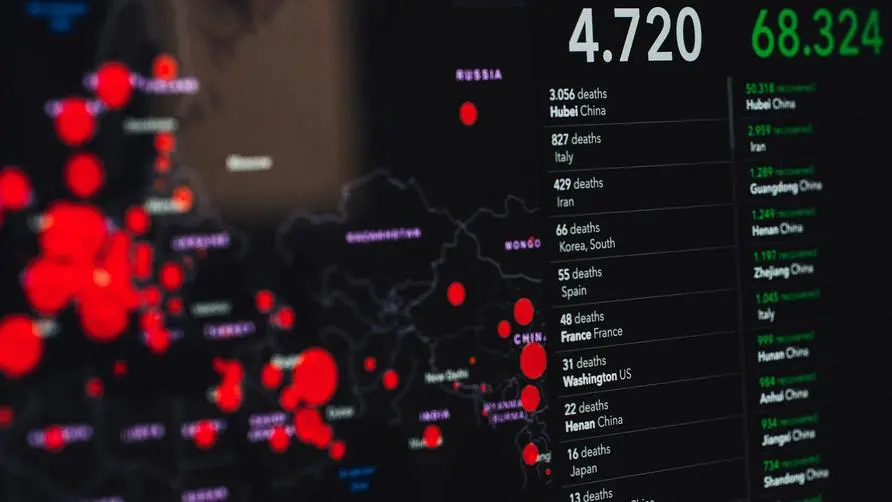Will the new coronavirus and influenza virus trigger a "double epidemic"? Experts worry that the relaxation of epidemic prevention will reduce the vaccination rate

Anti-epidemic measures in various countries are gradually relaxed, and influenza viruses take advantage of the opportunity to emerge
Due to the global efforts to prevent the new coronavirus, people in various countries have generally improved their awareness of epidemic prevention. Seasonal influenza did not cause large-scale infections and deaths last year. However, at the end of last year, countries gradually launched unblocking policies, but they were faced with Omicron mutant strains and the peak influenza season at the same time. The European Center for Disease Prevention and Control (ECDC) reported this month that the influenza virus has spread faster than expected in Europe since mid-December 2021.
Data provided by ECDC and WHO point out that in Europe, the average number of confirmed cases of influenza in intensive care units has gradually increased, reaching a peak of 43 cases a week by the end of last year. Compared with 2020, there was only one case of influenza in the intensive care unit, a significant difference between the two.
Pasi Penttinen, an influenza virus expert based at ECDC, said that the resurgence of influenza viruses may be related to Europe’s increasingly relaxed epidemic prevention policies. As vaccination has been widely implemented in Europe, countries have successively relaxed epidemic prevention measures, causing the influenza epidemic that was originally under control to break out again. Pasi Penttinen believes that if European countries do not resume restrictive measures after spring, the spread of influenza may be prolonged.
“Double epidemic” of new coronavirus and influenza virus may endanger medical capacity
The new coronavirus and influenza virus spread at the same time, which was called a “Twindemic” by media from various countries. Nancy Foster, vice president of the American Hospital Association, pointed out that in the summer of 2021, major medical hospitals in the United States have been exhausted to cope with the large-scale infection of the new coronavirus. If the influenza epidemic continues to expand, igniting a double epidemic outbreak, the medical capacity will be reduced. will be on the verge of collapse.
Therefore, the U.S. Centers for Disease Control and Prevention (CDC) also updated its policy direction at the end of 2021 to include those previously vaccinated against influenza (such as infants, patients with chronic diseases, people with low immune function, middle-aged and elderly people over 50 years old, and medical workers) Expand the scope of vaccination in order to reduce the medical burden.
A joint study by the University of Miami and the Maryland Medical Center pointed out that compared with subjects who did not receive the flu vaccine, subjects who received the flu vaccine had a lower positive rate of COVID-19 tests and shorter hospitalization times. Influenza vaccination has no harmful effects on patients with COVID-19, and influenza vaccination appears to be associated with a reduced risk of confirmed COVID-19 and reduced severity of clinical symptoms.
Relaxing epidemic prevention will reduce the willingness to vaccinate. Is it difficult to suppress the influenza virus this year?
According to reports from The Washington Post and The Reuters, countries such as Israel, Australia, France and Brazil are all under the threat of this “double epidemic”, in which the influenza virus There were 72 severe cases in France and six deaths.
Vaccination is an important weapon in the fight against dual epidemics. However, the influenza virus that has been circulating since the end of last year is mainly caused by the “H3 strain” of influenza A virus. Major local vaccine suppliers in Europe say flu transmission rates were extremely low last year and there is insufficient data to assess the effectiveness of this season’s vaccine. Therefore, the influenza vaccines available this year may not be able to successfully suppress the H3 virus strain.
Persuading people to get the COVID-19 vaccine and the flu vaccine at the same time may also be challenged by different public opinions. Research from the US National Institutes of Health (NIH) points out that the gradual loosening of border controls and epidemic prevention measures has actually made people less willing to get vaccinated, or they have a wait-and-see attitude. Foster said that allowing more people to receive two vaccines is the best way to maintain medical capacity, and called on the public to receive the appropriate vaccine as soon as possible.
source:
Return of the flu: EU faces threat of prolonged ’twindemic’
Activate the covered “Fusion” card! Dengue fever combined with COVID-19 may be twice as severe? !





